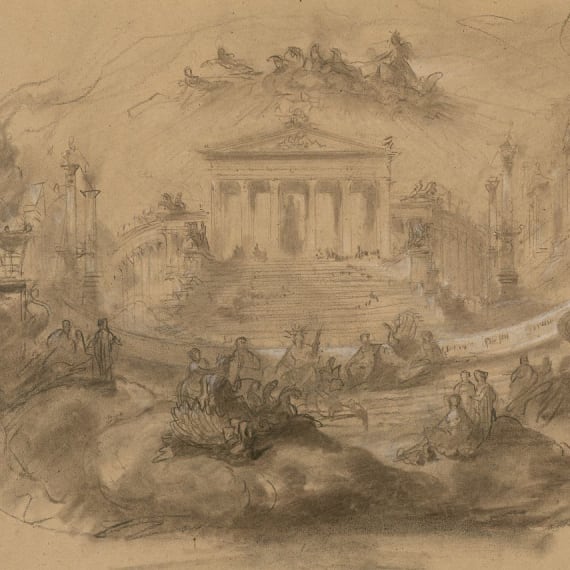Prices
Show / Event
Venue
Experience
No result. Clear filters or select a larger calendar range.
No show today.
© BnF

The revival of comédie-ballets from 1850 onwards
Exhibition: "Molière en musiques" (‘Molière and Music’)
In the 18th century, the Comédie-Française was the only theatre in Paris still performing Molière's comédie-ballets, in particular his most iconic works, Le Bourgeois gentilhomme and Le Malade imaginaire. As a result, a whole part of this repertoire fell into oblivion.
It was not until the mid-19th century that the Théâtre-Français reintroduced forgotten works such as Psyché (1862). At a time when early music was being rediscovered, works by Lully and Charpentier were frequently combined with fragments by other composers such as Rameau and Campra.
At the end of the 19th century, other Parisian theatres revived Molière's comédie-ballets, such as Le Malade imaginaire, staged with Charpentier's music, which had been 'restored', or in other words, rediscovered, arranged and supplemented by Camille Saint-Saëns (1892).
At the end of the 1920s, following the 300th anniversary of the birth of Molière, which gave rise to a whole series of performances at the Comédie-Française, avant-garde directors took a fresh look at Molière's comédie-ballets, like Gaston Baty who in 1929 staged Le Malade imaginaire, restoring Charpentier's music as faithfully as possible.
Beginning in the late 1930s at the Comédie-Française, the stage directors Pierre Bertin and then Jean Meyer meticulously incorporated the interludes of songs and dance, while the music directors Raymond Charpentier and his successor, André Jolivet, arranged the original music, sometimes adding pieces of their own composition.
Until the early 1980s, the fact that nothing was known about the art of dance in the 17th century made it difficult to adapt classical choreography to this music – although choreographers did try – and Lully's work was sometimes combined with the orchestral suite Le Bourgeois gentilhomme by Richard Strauss (1917), which was easier to choreograph.
Gallery

Charles-Antoine Cambon, Psyché, esquisse de décor de l’acte V, Comédie-Française, 1862 © BnF, Bibliothèque-musée de l’Opéra

Camille Saint-Saëns, Marc-Antoine Charpentier, Le Malade imaginaire revu par C. Saint-Saëns, 1892-1912, Partition d’orchestre, manuscrit autographe © BnF, département de la Musique

Charles Bétout, Maquette de costume pour Scaramouche dans L’Amour médecin, mise en scène de Georges Berr, Comédie-Française, 1920 © Bibliothèque de la Comédie-Française

Charles Bétout, planche de costumes pour les masques dans "Les Fâcheux", mise en scène de Georges Berr, Paris, Comédie-Française, 1921. © Coll. Comédie-Française

Daniel Cande, Les Plaisirs de l’île enchantée, mise en scène de Maurice Béjart, Comédie-Française, 1980 © BnF, département des Arts du spectacle













